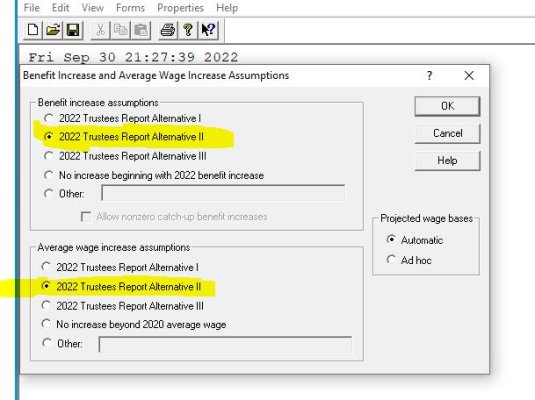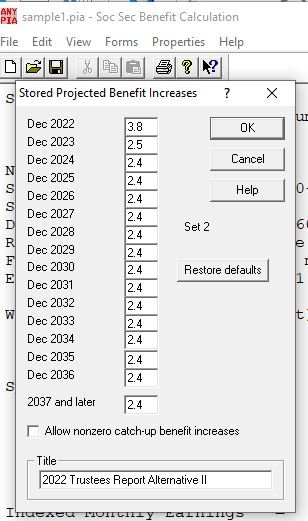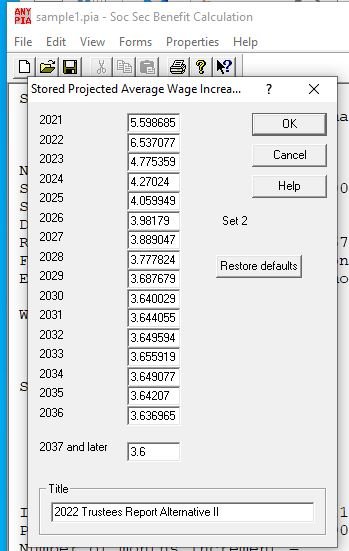I'm sorry you will ill-treated by the person you spoke with. We should expect better from our public servants. It is possible that she was confused or misinformed about her father's situation.
Your social security benefit at full retirement age is called your Primary Insurance Amount (PIA), which is calculated based on your average indexed monthly earnings (AIME). Basically, that takes the reported earnings from when you were 16 and adjusts them for inflation to when you were 60. And from when you were 17 and every year thereafter. After inflation adjusting each years earnings, they take the 35 highest amounts and average them to get the AIME. Then, they calculate your PIA, which is 90% of the first $1024 dollars of AIME plus 40% of the amount of AIME between $1024 and $6172 plus 15% of the amount of AIME over $6172. So, for example, if your average AIME as of 2022 was $7000, your PIA would be (0.9 x 1024) + ((0.4 x (6172 - 1024)) + (0.15 x (7000 - 6172)) = $3105. Your particular PIA was determined the year you turned 60, back in 2017, so the actual calculation would use the "bend point" numbers from then ($1024 and $6172 in the above equation are the bend points in 2022; they were lower in the past.) But you get the idea.
So, social security depends entirely on how much earned income was reported to the Social Security Administration over the years you were working and paying social security taxes. It is irrelevant whether that income was from self employment income reported on a Form SE or employee wages reported on a W2. It all goes into the AIME calculation.
There is a special minimum social security benefit for people who reported low wages/self employment income over the course of their working life. In 2017, the year your PIA was determined, that special benefit was $848 per month as a PIA. That amount will have increased by the social security COLAs for 2019 through 2022, so it ought to be about $1000 by next year when you reach full retirement age.
https://www.ssa.gov/OACT/ProgData/tableForm.html See also
https://smartasset.com/retirement/minimum-social-security-benefit
I don't know that there is a specific process that you would need to go through to get the special minimum benefit. I expect that you would just go ahead and apply for a social security benefit and they would simply apply the special minimum benefit amount if the calculation based on your reported earnings was lower than that. But, again, I really don't know.



